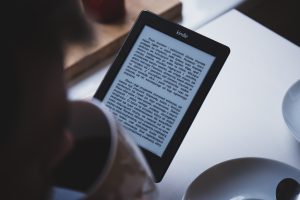Open education, the word Open has a more precise meaning. One of the definitions provided by Oxford is with no restrictions on those allowed to participate, open discussion meetings, each horse had won two open races.
According to the article, we get the model for an open pedagogy, with eight interconnected and dynamic attributes. participatory technologies, people and openness, trust, innovation and creativity, sharing ideas and resources, connected community, learner-generated, reflective practice, and peer review.

Photo by Sharon McCutcheon on Unsplash
I think the most prominent feature of open education is resource and ideas sharing. In our learning process, each semester has a fixed cost from textbooks., yet it is not cheap. The cost of textbooks has increased by over 1000% in the last 40 years. But sometimes we rarely use textbooks, even almost useless. KPU is a public degree-granting undergraduate polytechnic university in British Columbia, Canada, offers Canada’s first Zero Textbook Cost programs. KPU offers over 600 courses that have zero textbooks costs. https://www.kpu.ca/open/ztc As a student, I strongly encourage such programs. This program not only helps students save money on expensive textbooks, but also let the students experience the open education.

Photo by freestocks.org on Unsplash
We can popularize e-books instead of paper books. In this way, there is no cost, follow the trend of science and technology, and it is more convenient for students to use. But nowadays e-books can’t completely replace paper books. It is also impossible for all schools to use e-books as textbooks. So what we can do now is increase the number of use of textbooks. In other words, is use the used-books as much as possible. This is also a small area of resource sharing.
Reference
Stommel, J. (2018). Textbooks, OER, and the Need for Open Pedagogy. Retrieved from https://criticaldigitalpedagogy.pressbooks.com/chapter/textbooks-oer-and-the-need-for-open-pedagogy/

Leave a Reply